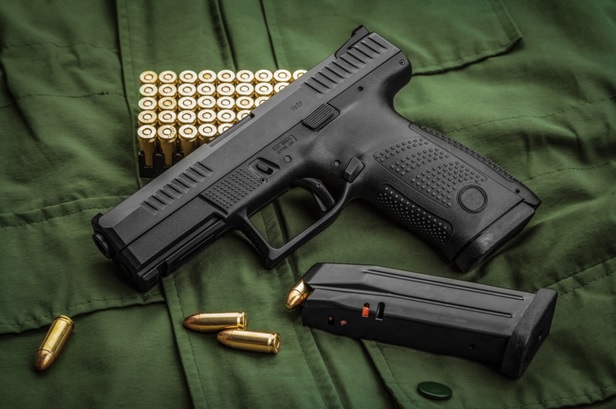About Pistol Frames: What You Should Know
Jul 5th 2023
Considering a home build project? Just want to learn more about firearm parts and terminology?
This guide has you covered with some of the top questions and answers about pistol frames.
What Is the Difference Between a Frame and a Receiver?
Nothing, really. The only real difference is that on a handgun it is called a frame and on a long gun it is called a receiver.
The frame, like the receiver, “receives” all of the other parts of the gun, allowing you to assemble it.
So, in handguns, it is the frame that is serialized and which constitutes the “actual” gun, just as a receiver does on a shoulder-mounted platform.
What Materials Are Pistol Frames Made from?
There are three main materials from which pistol frames are made: polymer, steel, and other metal alloys, usually aluminum.
Polymer framed handguns are becoming increasingly popular, perhaps because Glock pistols are made with polymer frames.
Polymer is also lightweight, the lightest of the three materials mentioned that are commonly used to make pistol frames.
Because of this, most pistols with polymer frames produce sharper recoil and experience greater muzzle jump than their counterparts with steel frames. At the same time, the frame flexes under recoil, which helps to mitigate it slightly.
Polymer frames, since they are not made with metal alloys, are effectively corrosion resistant, although they are not as durable or as strong as steel or aluminum.

Aluminum alloy frames are somewhere between polymer and steel pistol frames in terms of weight and strength. They are heavier and stronger than polymer frames, but lighter than steel.
Aluminum alloy frames produce similar recoil impulse to steel frames, but they don’t flex like polymer frames, so the recoil is usually very sharp. Expect most of it to be directed into your wrist and arms.
They are not as corrosion-resistant as polymer frames, but can corrode, although they do not rust like steel does.
Finally, we have steel pistol frames, which are the heaviest and strongest of all frame materials.
Because they are so heavy and dense, they can absorb a lot of the recoil produced, which helps keep it and muzzle jump under control.
That said, they are very prone to rust, so you need to be judicious about keeping your pistol dry and clean if it has a steel frame.
What Are the Different Types of 1911 Pistol Frames?
There are three main styles of 1911 pistol frames.
These are:
- Government frame: Full-sized, with a 5” barrel, overall length of 8.25”, height of 5.5”, and slide width of around 1” to 1.25”
- Commander frame: A slightly compact variation of the Government frame, with about ¾” shaved off of its dimensions.
- Officer frame: Subcompact with a 3.5” barrel and a height of about 4.8”
We recently wrote an entire article on 1911 frames. If you have additional questions consult the following post, 1911 Frames: What You Need to Know, or get in touch with us at 610-250-3960.
Why Are Some Pistol Frames Designated by Letters?
If you’ve ever heard of a “I Frame” or a “J Frame,” and the speaker was talking about firearms, he or she was probably talking about Smith & Wesson revolvers.
Smith & Wesson has produced revolvers with swing-out cylinders in 8 different frame sizes, which are I, K, M, N, J, L, X and Z, in order of release.
If you take the frames in alphabetical order (with the exception of the S&W M frame), you will see that the frames increase in size in order to accommodate larger, heavier calibers and cartridges.
Therefore, with the exception of M frames, the I frames are the smallest and the slightest, and X and Z frames are the largest and heaviest.
The smallest of them, the M frame, was produced between 1902 and 1922, and was used to produce .22 caliber 7-shot revolvers.
The I and K frame revolvers are slightly larger and were used to build .22 and .30 caliber revolvers, and on the other end of the spectrum, the larger X and Z frames were used to build .45 and .50 caliber revolvers.
What Do I Need If I Want to Build a Pistol from a Frame Blank?
If you’re considering building your own pistol at home, you’ll need a frame, a complete parts kit, a jig, and a router with the appropriate bits to finish machining the frame blank.
Also, be aware that building unserialized firearms at home (though permitted by the ATF) is not legal at the state level in some states and in some other jurisdictions.
If you are unsure of the laws in your area, always consult a firearm lawyer before proceeding with a home build project.

Visit Our Shop
If you have questions or want to find a frame or builder’s kit that’s suitable for your project, come visit us in our showroom at 50 Hilton Street in Easton and we’ll be glad to help you out.

